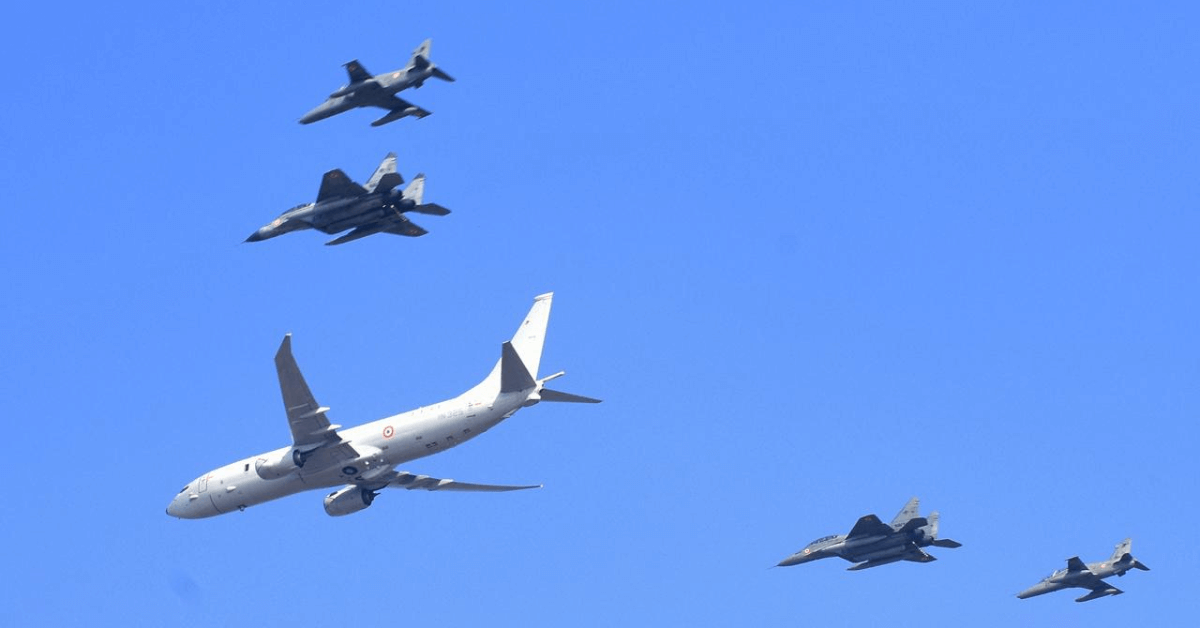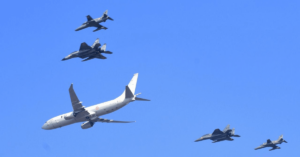
Bridge Hit By Crane After Tow Captain Relies On Faulty Estimates, NTSB Finds
February 11, 2025
Fire Breaks Out Aboard Disney Cruise Line’s Newest Ship, Passengers React
February 11, 2025

The Indian Navy has partnered with Bengaluru-based NewSpace Research & Technologies (NRT) to develop the Naval Collaborative Combat Air Vehicle (N-CCAV), a jet-powered drone named Abhimanyu.
Designed as a loyal wingman, Abhimanyu is set to operate alongside India’s MiG fighter jets and future Rafale-Ms. The latest model of the drone is currently on display at the Aero India 2025 exhibition in Bengaluru.
The Abhimanyu project is partially funded by the Indian Ministry of Defense’s Innovations for Defence Excellence (iDEX) initiative and internal company funding.
iDEX, launched in 2018, has been hosting Acing Development of Innovative Technologies (ADITI) challenges, one of which focused on the Navy’s N-CCAV requirements.
Per reports, the Indian Navy plans a fleet of Abhimanyu drones, each with different capabilities. These drones will enhance situational awareness, extend sensor reach, and provide tactical flexibility for carrier-based operations.
They could also be deployed onshore for additional support in naval missions.
The Abhimanyu drone is designed for stealth and high-speed operations. While not a fully stealth aircraft, it incorporates several features to reduce radar detection, such as:
- Swept wings, horizontal stabilizers, and a single vertical tail.
- Narrow air intakes positioned along the rear fuselage.
- A continuous chine-line wrapping around the fuselage to minimise radar reflections.
- Trapezoidal main landing gear doors, commonly seen in stealth aircraft.
NewSpace has integrated AI and machine learning (AI/ML) technology into the drone, leveraging its previous work in drone swarming technologies.
The company also showcased Sheshnaag, a new line of smaller kamikaze drones with swarming capabilities, at the same exhibition.
Placards at the exhibition revealed the Abhimanyu’s performance specifications:
Top Speed: 300 knots (550 km/h)
Operational Range: 1,000 km
Service Ceiling: 6,000 meters (19,700 feet)
While the figures suggest that Abhimanyu is slower and shorter-range than some existing loyal wingman drones, experts say that such drones can still provide valuable tactical advantages in planned operations.
The Abhimanyu is designed to support a variety of missions, including:
- Intelligence, Surveillance and Reconnaissance (ISR): Equipped with advanced sensors for real-time battlefield awareness.
- Electronic Warfare (EW): Capable of jamming enemy radars and sensors, helping strike missions.
- Strike Missions: Armed with precision-guided weapons to neutralise naval or land-based threats.
- Missile Carrier: Can carry extra air-to-air missiles for MiG-29Ks, increasing the strike capacity of manned fighters.
- Decoy Operations: Can mimic the radar signature of manned jets to mislead enemy defences.
Manned-Unmanned Teaming (MUMT) With Indian Navy Fighters
It is designed to integrate with manned fighter jets using advanced MUMT (Manned-Unmanned Teaming) technology. This allows the drone to fly ahead of fighter jets, use its sensors to detect threats and share intelligence in real-time.
By working in coordination with manned aircraft, the drone extends the operational reach of the Indian Navy’s carrier strike groups. Per reports, NewSpace Research & Technologies is developing the N-CCAV to be cost-effective and rapidly producible.
A document reviewed by defence analysts suggests that the drone is designed to be expendable. Similar to the U.S. Navy’s “consumable” CCA drone concept, the Abhimanyu may have a shorter operational lifespan but offer flexibility in large-scale deployments.
The Abhimanyu is much smaller than the HAL Warrior, a twin-engine drone being developed by Hindustan Aeronautics Limited (HAL) for the Indian Air Force’s Combat Air Teaming System (CATS) program.
HAL Warrior has a max takeoff weight of 1,300 kg, a top speed of 850 km/h, a range of 800 km, and an endurance of 80 minutes.
References: TWZ, Defense News
Source: Maritime Shipping News


